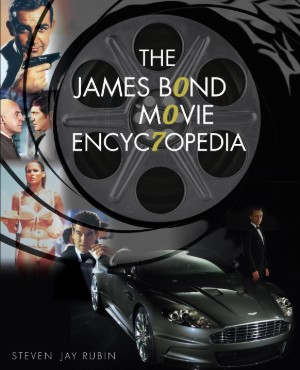An amazing 360-degree automobile jump that is a highlight of The Man with the Golden Gun. In the story, Bond (Roger Moore), is attempting to overtake Scaramanga (Christopher Lee) in a car chase through Bangkok, and he has to cross one of the narrow Thai canals, known as klongs, in a hurry. With no intact crossing in sight, resourceful 007 spies a fallen bridge, backs up his car and, rams it forward over the broken timbers. The car does a full 360-degree turn in the air and lands perfectly on the other side.
Designed by Jay Milligan, a member of stuntman Joie Chitwood’s daredevil team, the jump was actually performed for real on location in Thailand. During preproduction, Milligan had worked out the stunt with the help of a computer at Cornell University: speed, car specifications, the length of the jump, and wind resistance were inputted, and out came the mathematical specifications for the jump. From this information, Milligan knew that he needed a set speed, a specially designed car, and takeoff and landing ramps designed to give the car the proper lift and turn so that it could land easily on all four tires.
Eon Productions purchased a two-year option on the stunt, which prohibited Milligan and any other stunt driver from performing it in public. It was something that had to be kept secret as much as possible—the producers were always nervous about quickie television productions stealing their stunts and other memorable moments. In Bangkok, production designer Peter Murton supervised the construction of specially designed takeoff and landing ramps over one of the local klongs. The ramps were skillfully disguised as a fallen bridge.
For a stunt that lasted all of fifteen seconds in the film, the producers spent a small fortune to build the fake bridge and the approach road, and to pay the salaries of Milligan’s driving team. The cars for the stunt were provided by the American Motors Corporation, which was keenly aware that an appearance in a Bond film could easily boost the sales of its new line of AMC Hornets. Although the Hornet couldn’t compete with Aston Martin in the styling department, it met Milligan’s specifications perfectly. A team of engineers redesigned the car’s chassis, placed the steering column in the center of the car, cut down the body in certain places and widened it in others, and monkeyed around with certain weight factors that could affect the eventual jump. By June 1974, the Hornet was ready to jump the klong.
Christopher Lee was one of hundreds of spectators who lined the canal on that summery day. “lt was done right after lunch by Bumps Willard, one of Milligan’s drivers,” remembered Lee. “There were cranes and ambulances standing by should Willard end up in the water, and director Guy Hamilton had set up a number of cameras to catch the stunt from different angles. And then it just happened. The Hornet threw up a little dust, revved up its engine, and then hit the launch ramp. Before you knew it, it had flown across the canal, turned perfectly around and landed upright on four tires. He made it look easy. The stunt was so perfect that there was talk about doing it again. Some people worried that if it did look too easy, an audience might think it was faked. Any such talk was soon quashed, however, considering the added expense as well as the danger of putting Willard back in the car.”[1] Interestingly, in the original script, screenwriter Richard Maibaum had wanted Bond to do the stunt twice: 007 jumps the klong and makes it to the other side, only to discover that Scaramanga is still on the opposite side of the klong. It was one Maibaum idea that was immediately dumped.
Unfortunately, the final film adds the sound of a slide whistle as as the car spirals through the air in slow motion—ruining the dramatic impact of one of the Bond series’ greatest moments with a silly sound effect.
[1] Christopher Lee, interview by Steven Jay Rubin, Los Angeles, February 15, 1989.

